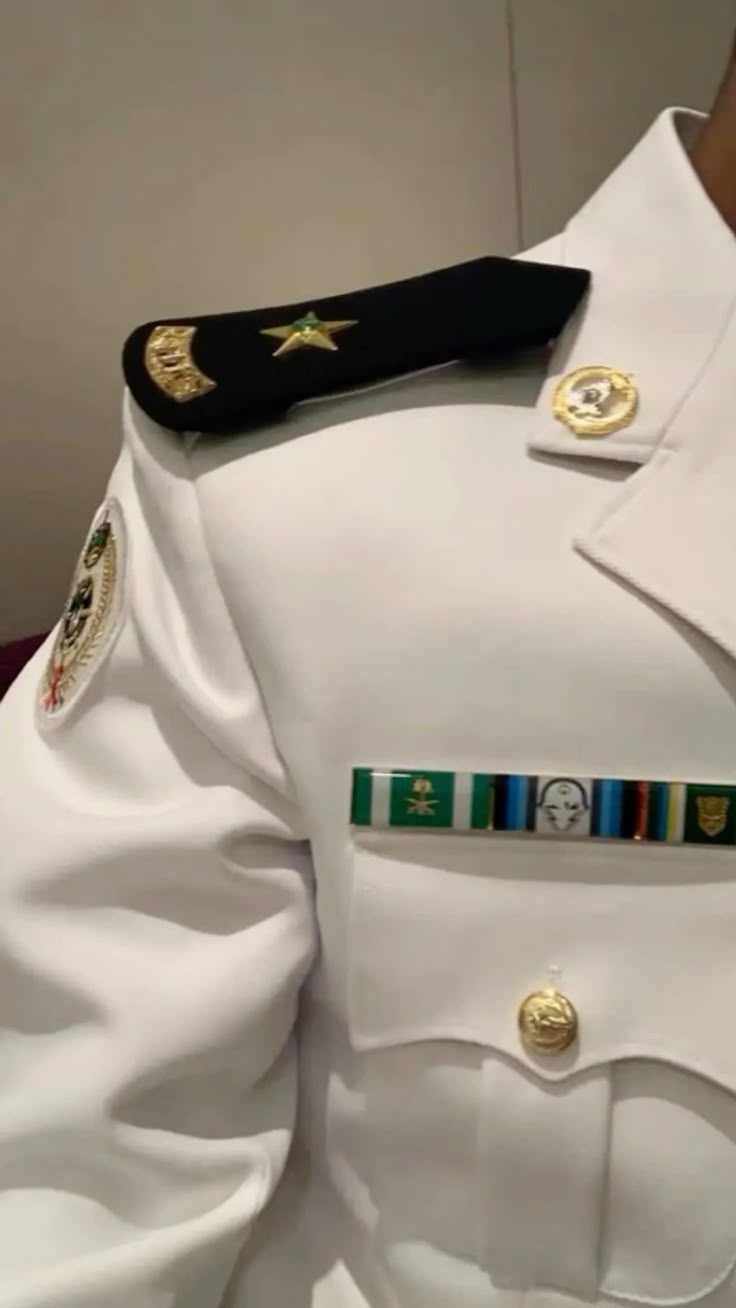
Epaulettes and Insignia: Understanding Ranks in Saudi Aviation Attire
Epaulettes and insignia form the visual cornerstone of rank identification in Saudi aviation, embodying a complex system that merges international aviation standards with Saudi Arabia's unique cultural and organizational heritage. These rank indicators serve not only as functional markers of experience and authority but also reflect the Kingdom's aviation history, military traditions, and ongoing modernization initiatives.
Historical Context and Evolution
Saudi Arabian aviation insignia have evolved significantly since the establishment of the Kingdom's first aviation entities. This evolution reflects several key influences:
- British colonial influence: Early Saudi aviation rank systems drew heavily from British Royal Air Force traditions, a legacy of British advisory roles in the development of Saudi military aviation
- American technical partnerships: From the 1950s onward, collaboration with American aviation entities introduced new elements to rank designations
- Pan-Arab design aesthetics: During the 1960s-80s, Saudi insignia incorporated elements common to other Arab air forces
- Indigenous design evolution: Since the 1990s, a distinct Saudi aviation identity has emerged, blending international standards with uniquely Saudi visual elements
The modern Saudi aviation insignia system represents a sophisticated synthesis of these influences, resulting in a distinctive approach that maintains international recognition while embodying Saudi national identity.
Key Insight: The Dual Purpose of Aviation Insignia
Saudi aviation insignia serve dual functions beyond rank indication. First, they represent a critical safety function by enabling immediate identification of command authority during operational scenarios. Second, they fulfill an important cultural role by visually communicating the prestigious position aviation professionals hold in Saudi society, where aviation careers—particularly piloting—carry significant social status.
Epaulette Structure and Design Elements
Saudi aviation epaulettes follow a structured design system that communicates multiple layers of information:
Physical Construction and Materials
Saudi aviation epaulettes are distinguished by their meticulous construction and material selection:
- Base material: Traditional wool-polyester blends for military applications; lighter synthetic materials for civil aviation
- Stripe composition: Gold bullion embroidery for formal uniforms; gold mylar for everyday operational wear
- Backing structure: Reinforced shoulder boards with secured attachment systems
- Dimension standards: Precise measurements (typically 11cm x 5cm) maintained across services
Premium Saudi carriers like Saudia and newer entrants like Riyadh Air utilize enhanced materials that combine traditional appearance with modern performance characteristics, including UV-resistant threads and antimicrobial treatments suited to the Saudi climate.
Visual Information System
Saudi aviation epaulettes communicate multiple information categories through a sophisticated visual system:
- Rank indication: Primary information conveyed through stripe number, configuration, and dimension
- Service branch: Background color and border elements identify specific aviation departments
- Specialty markers: Integrated symbols denoting specialized training or certifications
- Technical vs. command roles: Subtle variations in stripe patterns distinguish operational from administrative positions
This layered information system enables rapid identification of personnel qualifications and authority levels in operational contexts.
Commercial Aviation Rank Structure
Saudi commercial carriers maintain a standardized rank progression system aligned with international aviation standards while incorporating Kingdom-specific elements:
Flight Deck Personnel Ranks
- Captain (Four stripes): Full command authority, typically requiring minimum 3,000-5,000 flight hours depending on the carrier
- Senior First Officer (Three stripes with narrow fourth): Advanced first officer with extended responsibilities, unique to Saudi and several Gulf carriers
- First Officer (Three stripes): Secondary pilot position requiring commercial license and minimum 1,500 flight hours
- Second Officer (Two stripes): Entry-level position primarily on long-haul operations
- Cadet Pilot (One stripe): Pilot in supervised training phase, worn during operational training flights
Saudia-Specific Variations
As the Kingdom's flag carrier, Saudia implements several distinctive elements in its epaulette system:
- Royal designation: Incorporation of subtle crown element for senior captains with royal flight experience
- Hajj service indicators: Specialized epaulette elements for pilots certified for Hajj aviation operations
- Technical progression markers: Additional indicators showing progression within each rank level
- Cultural accommodation: Modified design elements ensuring compatibility with traditional Saudi attire when worn during ground operations
Cabin Crew and Ground Personnel
Non-flight deck aviation personnel maintain a coordinated rank system with distinctive indicators:
- Cabin Services Director (Three stripes, winged insignia): Senior cabin authority on wide-body aircraft
- Senior Cabin Crew (Two stripes, winged insignia): Section supervisors on larger aircraft
- Cabin Crew (One stripe, winged insignia): Standard service position
- Ground Operations Supervisor (Shoulder boards with company-specific insignia): Varied by organization with standardized color coding

Comparison of rank insignia across major Saudi aviation organizations
Military Aviation Insignia
The Royal Saudi Air Force (RSAF) maintains a distinct epaulette system that balances international military standards with Saudi military traditions:
Officer Rank Structure
- General ranks (Crown and crossed swords with varying star configurations): Reserved for senior command positions
- Colonel ranks (Eagle insignia with varying stripe configurations): Senior operational and strategic leadership
- Major/Captain ranks (Star configurations with stripe variations): Mid-level tactical leadership
- Lieutenant ranks (Stripe variations with distinctive shoulder board colors): Junior officer positions
Technical and Specialist Designations
The RSAF employs additional visual elements to denote specialized functions:
- Combat pilot wings: Distinctive gold wing design positioned above standard rank insignia
- Technical specialist markers: Color-coded backing elements for engineering, communications, and logistics specialties
- Command qualification indicators: Additional elements for officers with squadron or wing command authority
- Joint service indicators: Modified designs for personnel assigned to joint operations
Cultural and Practical Considerations
Cultural Context and Meaning
Saudi aviation insignia carry significant cultural weight beyond their functional role:
- Religious considerations: Designs intentionally avoid elements that might conflict with Islamic aniconism principles
- National symbolism: Subtle incorporation of Saudi national symbols and color palettes
- Tribal recognition: Historical accommodation of traditional leadership structures in military contexts
- Modern identity expression: Recent design evolutions reflect Vision 2030's modernization while respecting tradition
Practical Implementation Challenges
Aviation insignia in Saudi Arabia contend with specific environmental and operational considerations:
- Climate adaptation: Materials selection addressing extreme heat, low humidity, and UV exposure
- Formal/operational variants: Differentiated designs for ceremonial versus operational contexts
- Manufacturing considerations: Balancing traditional craftsmanship with modern production methods
- International recognition: Ensuring immediate recognition by international aviation personnel
Saudi Aviation Academy and Training Contexts
Aviation training institutions in Saudi Arabia implement specialized epaulette systems that indicate progression through qualification phases:
- Cadet progression indicators: Sequential visual elements added as training milestones are achieved
- Instructor designations: Distinctive elements for various instructor qualifications
- Academic/practical balance: Visual distinction between academic and flight operation phases
- International certification indicators: Elements denoting completion of internationally recognized certifications
Saudi Aviation Academy Specifics
The Kingdom's premier aviation training institution employs a distinctive progression-based insignia system:
- Phase-specific colors: Background color transitions marking progression through training stages
- Graduated stripe introduction: Progressive addition of partial then complete stripes as competencies are demonstrated
- Wings ceremony significance: Formal transition in insignia marking completion of primary training requirements
Vision 2030 and Evolution of Saudi Aviation Insignia
Saudi Arabia's Vision 2030 initiative is driving evolution in aviation insignia design and implementation:
- New carrier design systems: Recently established airlines like Riyadh Air introducing contemporary interpretations of traditional rank structures
- Gender considerations: Thoughtful adaptation of insignia for the growing number of female aviation professionals
- Technical integration: Incorporation of advanced manufacturing techniques while maintaining traditional appearances
- International harmonization: Balancing distinctive Saudi identity with global aviation standards
Conclusion
Epaulettes and insignia in Saudi aviation represent far more than simple rank indicators. They embody a sophisticated visual language that communicates professional qualification, authority structures, and organizational identities while respecting Saudi cultural heritage and adapting to modern operational requirements.
As Saudi Arabia continues its ambitious aviation sector expansion under Vision 2030, these visual elements will likely continue evolving—maintaining their crucial functional role while adapting to new organizational structures, gender integration initiatives, and the Kingdom's growing influence in global aviation.
Understanding this complex system offers valuable insight not only into operational hierarchies but also into how Saudi Arabia balances international standards with national identity in its approach to aviation professionalism.
About the Author
Abdullah Al-Qasabi is an aviation uniform specialist with 18 years of experience in airline visual identity systems. As a former Royal Saudi Air Force officer and current consultant to multiple Gulf carriers, he specializes in the intersection of operational requirements and cultural considerations in aviation attire design.
Share Article
Related Articles
Aviation Uniform Consultation
Our specialized aviation division provides custom uniform programs for airlines, flight schools, and aviation service providers across Saudi Arabia.
Explore Aviation Services